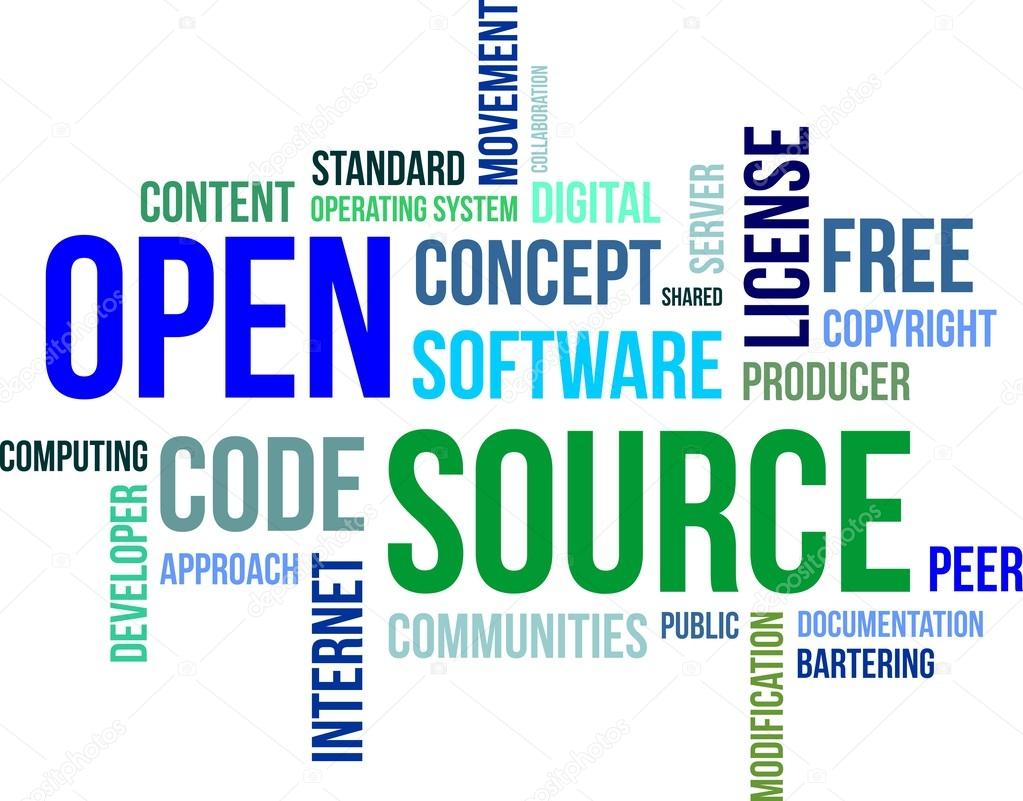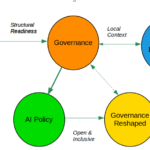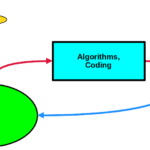By all accounts, the ChatGPT “revolution” has triggered a well-deserved resurgence of free software or Open Source free/Open Source software (FOSS) that, some argue, will allegedly challenge the dominance of Big Tech over LLMs. While I disagree with such a prediction, I think FOSS can still play a vital role, as it did over 20 years ago when facing the wrath of powerful and wealthy proprietary software companies and their millions of friends. But before diving into the recently rediscovered thermal waters, we should revisit FOSS – yep, once again!
FOSS
The so-called “PC revolution” of the 1980s (personal computer, not political correctness) was the opening shot for massifying computing. While PCs were initially expensive, costs started to drop fast while innovative devices such as laptops and, a bit later on, mobile devices proved to be decisive propellers. However, hardware alone was a necessary but insufficient condition for such massification. Software development was as important, if not more.
In the early days of computing, when mainframes and minicomputers dominated the scene, software was usually provided for free, along with the much more expensive and typically large hardware. We can assume that the total hardware price included the cost of software development, which was undertaken in-house or via very selected providers. That changed dramatically in the 198os as the new computer architecture lacked basic software applications. Enticing programmers to develop PC software was thus part of the equation. As a result, software development started to boom.
Three software development models emerged at that point. First in line was proprietary software development, perhaps the most pervasive. This software is licensed to end users for a fee, and the maker does not share the source code. For entities with multiple users, proprietary software firms offered volume discounts and unit costs depending on the total number of users. Regardless, this model offered no free lunches, and those trying to get one were systematically prosecuted globally. Freeware (not to be confused with shareware) was the second option. In this model, users were welcome to use the software for free, while end-user licensing agreements varied widely, depending on the author’s goals. Freeware was usually developed privately, and its source code was publicly unavailable for the most part.
The third model emerged in the 1980s and was Free Software (FS). Here, the source code must be available to all users who, in turn, have the right to modify, enhance, copy, distribute and redistribute as long as their contributions are part of the enlarged code base. This model comprises four fundamental freedoms that systematically capture the above. While FS has developed various licenses, the software can be used without paying any fees. In this light, developers from all walks of life were welcome to join if they endorsed the four freedoms. While private entities were welcome to use Free Software and modify it in-house, they could not repackage and license the new versions in the open market.
Such a restriction eventually led to the emergence of Open Source Software (OSS) in the late 1990s, as companies capitalizing on the first Internet boom, such as Netscape, found the Free Software freedoms too restrictive, thus preventing wider diffusion. That led to the creation of new and alternative software licenses that allowed FS commercialization. In any case, OSS is similar to Free Software and thus keeps access to the source code as one of its core traits (for the most part). What changed were the licensing schemes.
FOSS Political Economy
We can gain further insight into FOSS if we use a Political Economy perspective centered on an overall production process framework, an approach I have previously shared. In this light, I mapped the four Free Software fundamental freedoms into the four core production process categories, as depicted in the table below.
Interestingly, the fundamental Freedom Zero (F0), stipulating that we have the freedom to use the software any way we want, falls under the consumption sphere. Access to the source code is not required. But perhaps its primary intention is to allow end users to run the software for purposes other than initially set by its creators. And that probably requires examining the source code and doing a few coding tweaks here and there. Let us not forget that most end users cannot read computer code and are perfectly happy being regular consumers. That brings us to the fundamental Freedom 1 (F1) that allows us to read, study and modify the code freely, thus bringing consumption and production together. Here, reading should be seen as productive consumption as the objective is understanding the code and then changing it in the production sphere. In F1, access to the source code is essential, with the caveat that most FOSS users cannot really read source code.
The distribution sphere is the target of Freedom 2 (F2), allowing users to copy and redistribute the original software. One could then distribute software executables (in binary format), the original source code, or both. In the consumption sphere, having the source code alone is insufficient to run the program. One must compile the program locally, thus jumping into the production sphere, or get the executable files from another source via the distribution sphere. From the vantage point of consumption, F2 does not require access to the source code. The last fundamental Freedom (F3) brings together production and distribution. Unlike the production component of F1, here, we are free to add new features to the software, thus improving it. We must then distribute the new enhanced version to the whole community. These two steps are closely related and should not be separated unless the new coding is for private use only.
Note that the exchange sphere has not been part of the action as the software itself does not have a price – albeit some might charge end users with associated distribution costs, including media, packaging and shipping, for example – a common occurrence in the early days of the Internet. Nevertheless, unlike public domain software, Free Software has a copyright (called copyleft) that acknowledges creators’ contributions while preventing proprietary modifications to the code. It also offers a free General Public License (GPL) license that guarantees the four fundamental freedoms. These two fall within a peculiar exchange sphere where market prices play no role whatsoever. Instead, we get an exchange sphere for rights geared towards preserving freedom. In the case of OSS, we get an exchange sphere for benefits based on specific rights and responsibilities for software producers and consumers. But from the point of view of the consumption sphere, the difference between FS and OSS is zero.
Following mainstream economics definitions, FOSS can be categorized as a public good. Indeed, its consumption is open to all with no restrictions. Furthermore, actual consumption by end users does not reduce the pie size. The latter is a common trait of all digital goods that can be reproduced ad infinitum at almost no cost. The focus on consumption here matches FS’s first fundamental freedom (F0). So perhaps that is why it is first on the line of fire. However, following our Political Economy framework, looking at the actual FOSS production process could yield more nuanced insights. I will suggest that FOSS is a public good because its actual production is open to all, with no barriers erected in principle. It resembles more “an association of free men (and women)” working together towards a single social goal that benefits society.
Nevertheless, to join the team of producers, I must have the necessary coding skills to read, study, change and modify the code. Most do not have such qualifications, nor are they eager to acquire them. So, de facto, only a few can join that team, thus potentially creating a gap between production and consumption. As FOSS consumers, we might get software offerings irrelevant to our actual needs. On the other hand, coders are empowered and might even become benevolent dictators. In the land of the blind, the one-eyed person is king or queen.
Raúl







